The Crucial T500 SSD claims to be a versatile storage solution aimed at gamers, content creators, and professionals. It incorporates Micron’s 232-layer 3D TLC NAND technology, is powered by the Phison PS5025-E25 Controller, and offers various capacities from 500GB to 2TB.
The T500 also provides options with or without an integrated low-profile heatsink, attempting to fit into any system setup like laptops, desktops, and even PlayStation 5 consoles.
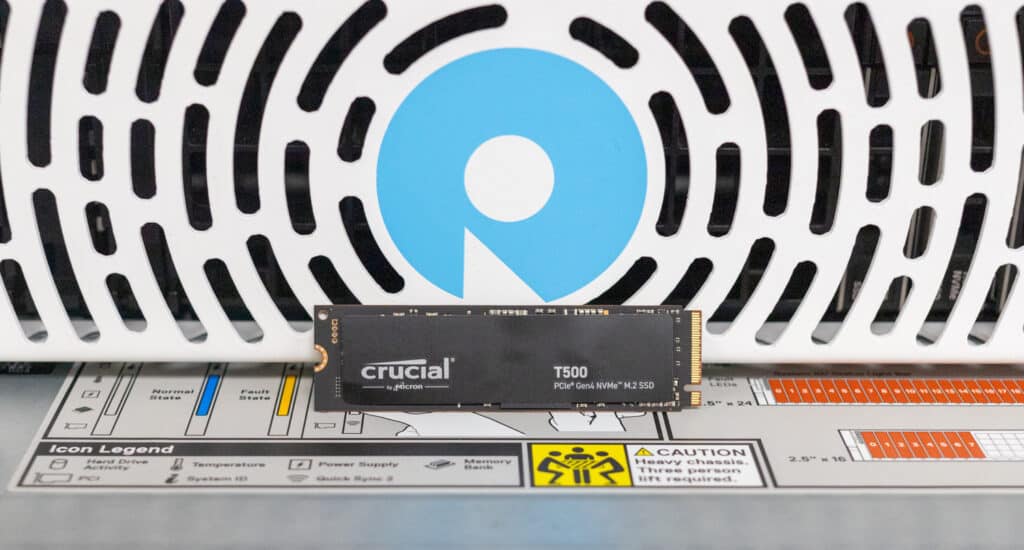
Crucial T500 Featrures
On paper, Micron’s new Gen4 SSD indicates sequential read speeds up to 7,400MB/s and write speeds up to 7,000MB/s, usual for SSDs built on a PCIe Gen4 NVMe platform. Additionally, the SSD has random read and write speeds that reach up to 1.18M IOPS and 1.44M IOPS, respectively. It’s important to note that these performance figures vary depending on the storage capacity. For instance, the 500GB model has sequential read and write speeds of 7,200MB/s and 5,700MB/s, while the 2TB version achieves the advertised maximum of 7,400MB/s for reads and 7,000MB/s for writes.
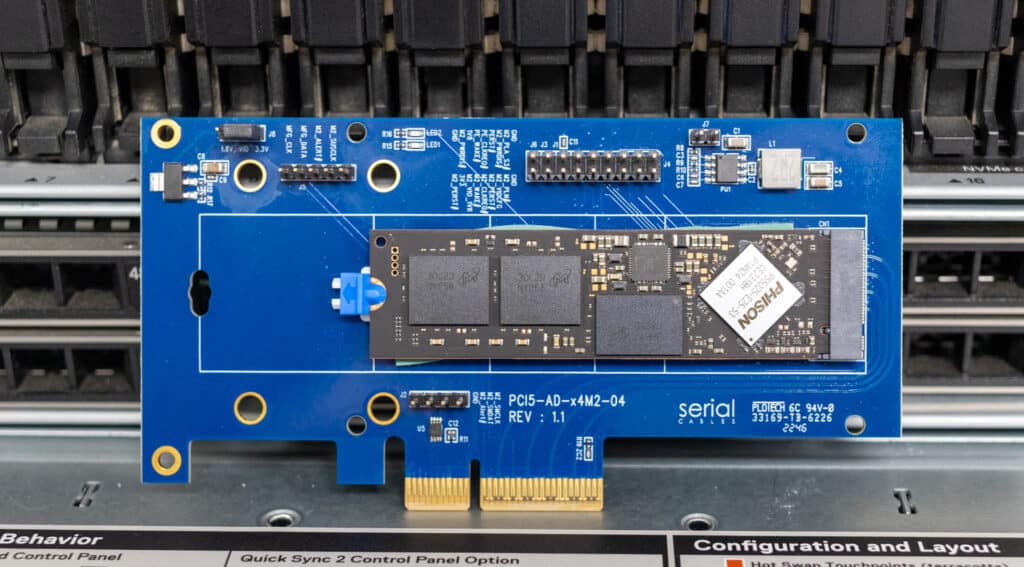
The T500 comes with a range of advanced features aimed at enhancing durability and data integrity. These include static and dynamic SLC caching, a Redundant Array of Independent NAND (RAIN), multi-layer data integrity algorithms, and adaptive thermal protection, among others. These features not are designed to not only optimize performance but also offer safeguards against data loss and overheating.
The Crucial T500 is also available in multiple SKUs both with and without an integrated low-profile heatsink. The heatsink-equipped version is specially designed for PlayStation 5 compatibility, while the non-heatsink version is tailored for laptops. Both versions can be used in desktops and workstations, offering a versatile range of use cases without the need for a third party heatsink.
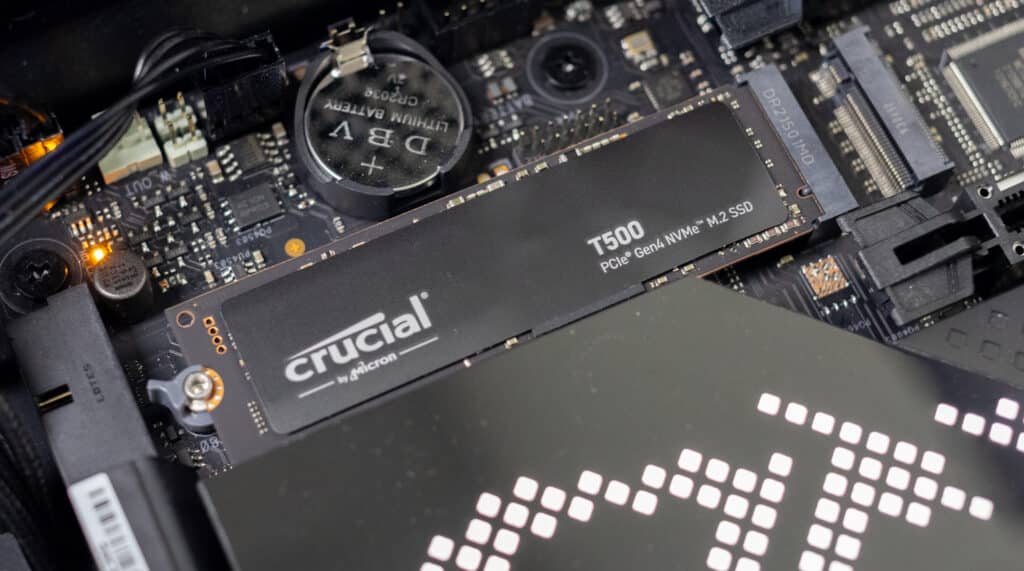
Backed by a 5-year warranty, the Crucial T500 Gen4 SSD is available in capacities of 500GB ($89.99), 1TB ($119.99 or $129.99 with heatsink), and 2TB ($169.99 or $179.99 with heatsink). We will be looking at the 2TB capacity (Non-heatsink model) for this review. Crucial T500 at Amazon (affiliate link).
Crucial T500 Specifications
| Specification | Details |
| Interface | PCIe 4.0 NVMe |
| NAND | Micron 232-layer 3D TLC NAND |
| Controller | Phison PS5025-E25 |
| Sequential Read Speed | Up to 7,400MB/s |
| Sequential Write Speed | Up to 7,000MB/s |
| Random Read IOPs | Up to 1.18M IOPs |
| Random Write IOPs | Up to 1.44M IOPs |
| Heatsink Options | Available with and without integrated low-profile heatsink |
| Storage Capacities | 500GB, 1TB, 2TB |
| Compatibility | Laptops, Desktops, PlayStation 5 |
| Advanced Features | Static and Dynamic SLC caching, RAIN, Multi-layer data integrity algorithms, Adaptive thermal protection, Data protection for power loss events, Active garbage collection, TRIM support, SMART, ECC, APST support |
| Warranty | 5-year limited |
Crucial T500 Performance
For database and synthetic testing, we leverage the Lenovo ThinkSystem SR635 server, equipped with an AMD 7742 CPU and 512GB of 3200Mhz DDR4 memory. NVMe is tested natively through an edge-card slot with an M.2 to PCIe adapter card. A significant focus is put on drive latency across the entire load range of the drive, not just at the smallest QD1 (Queue-Depth 1) levels. We do this because many common consumer benchmarks don’t adequately capture end-user workload profiles. For our added BlackMagic Disk Speed Test performed in Windows, we use our self-built StorageReview desktop.
We are reviewing the 2TB version of the Crucial T500 and will be comparing it to the following other consumer-grade SSDs:
- Samsung 990 Pro (2TB)
- Solidigm P44 (2TB)
- WD SN850X (2TB)
- Seagate Firecuda 530 (2TB)
VDBench Workload Analysis
When benchmarking storage devices, application testing is best, and synthetic testing is second. While not a perfect representation of actual workloads, synthetic tests help baseline storage devices with a repeatability factor that makes it easy to compare competing solutions. These workloads offer a range of different testing profiles ranging from “four corners” tests and common database transfer size tests to trace captures from different VDI environments.
These tests leverage the common vdBench workload generator, with a scripting engine to automate and capture results over a large compute testing cluster. This allows us to repeat the same workloads across a wide range of storage devices, including flash arrays and individual storage devices. Our testing process for these benchmarks fills the entire drive surface with data, then partitions a drive section equal to 1% of the drive capacity to simulate how the drive might respond to application workloads. This differs from full entropy tests that use 100 percent of the drive and take them into a steady state. As a result, these figures will reflect higher-sustained write speeds.
Profiles:
- 4K Random Read: 100% Read, 128 threads, 0-120% iorate
- 4K Random Write: 100% Write, 64 threads, 0-120% iorate
- 64K Sequential Read: 100% Read, 16 threads, 0-120% iorate
- 64K Sequential Write: 100% Write, 8 threads, 0-120% iorate
Starting with 4k random read, the Crucial T500 showed fairly good performance out of the gate, with a peak of 827K IOPS at a latency of 152.9µs.
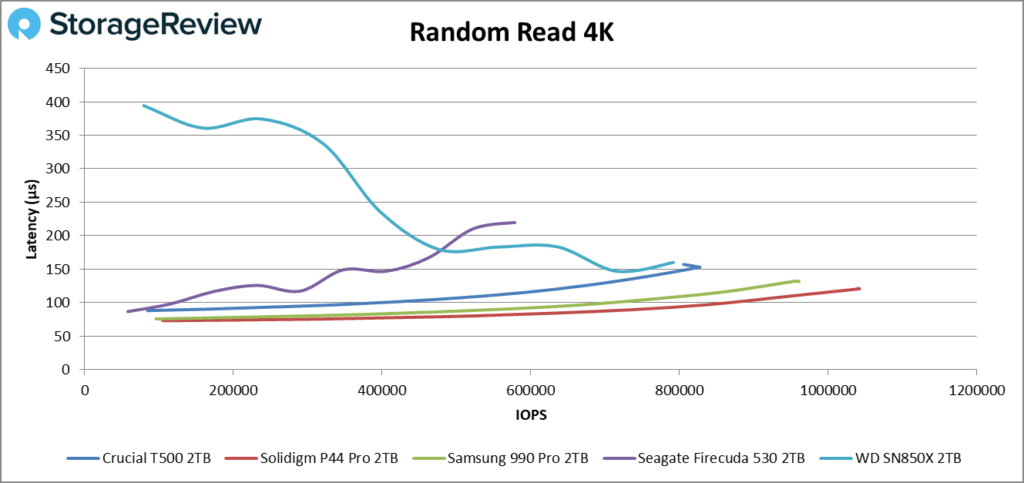
It was one of the poorest performing drives we’ve seen to date for 4K writes. Here, the T500 ended the test at just 140K IOPS (at 297.9us) with huge spikes in between that reached up to 1,640us in latency.
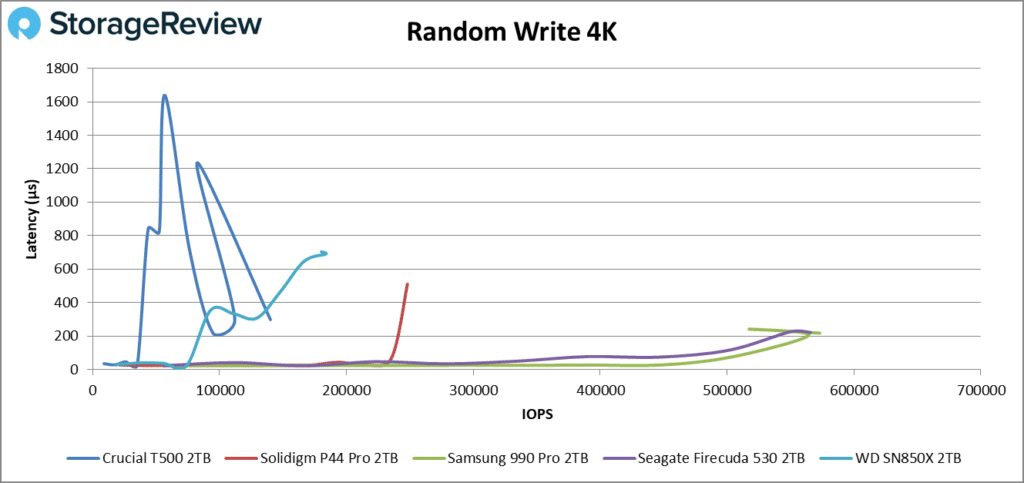
When looking at sequential reads, the Crucial T500 had a peak throughput of 4.54GB/s read with a latency of 438.4µs for last place among the competition.
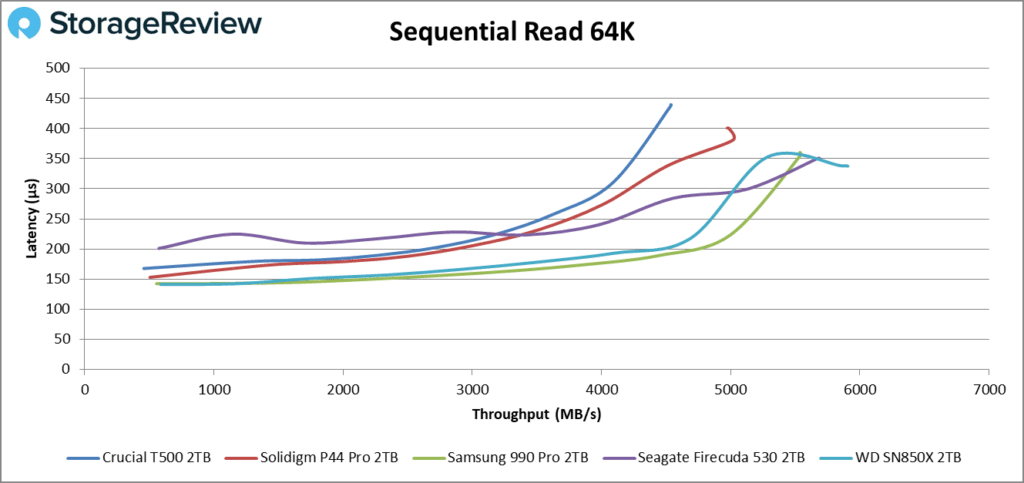
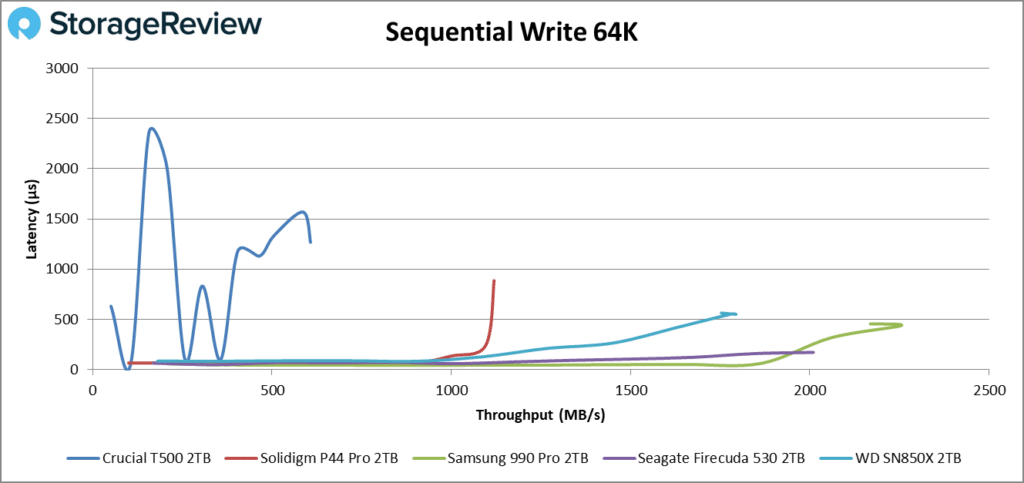
Next, we looked at our VDI benchmarks, designed to tax the drives further. These tests include Boot, Initial Login, and Monday Login. The T500 expectedly had mixed results with these workloads. That said, the T500 actually performed decently in our boot test, ending the test at 127K IOPS (at 195.4µs) before taking a slight blip in performance.
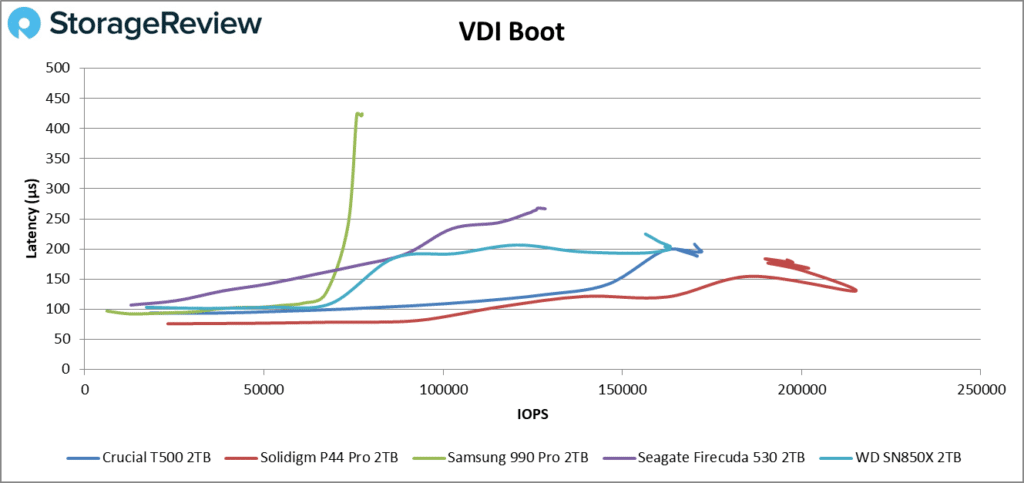
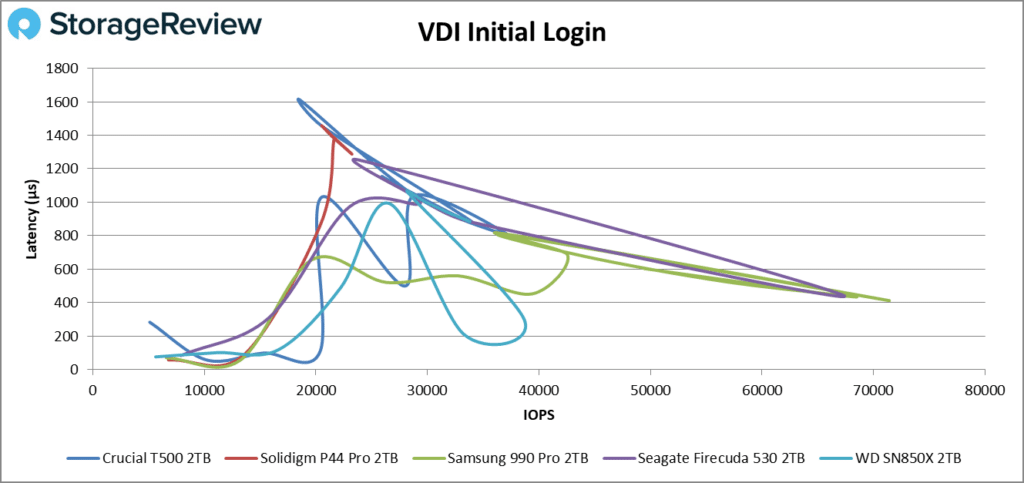
Finally, the VDI Monday Login benchmark, the T500 was able to hit almost 35K IOPS (243.1ms) before taking serious spikes and ending the test at 22K IOPS at 735.1ms
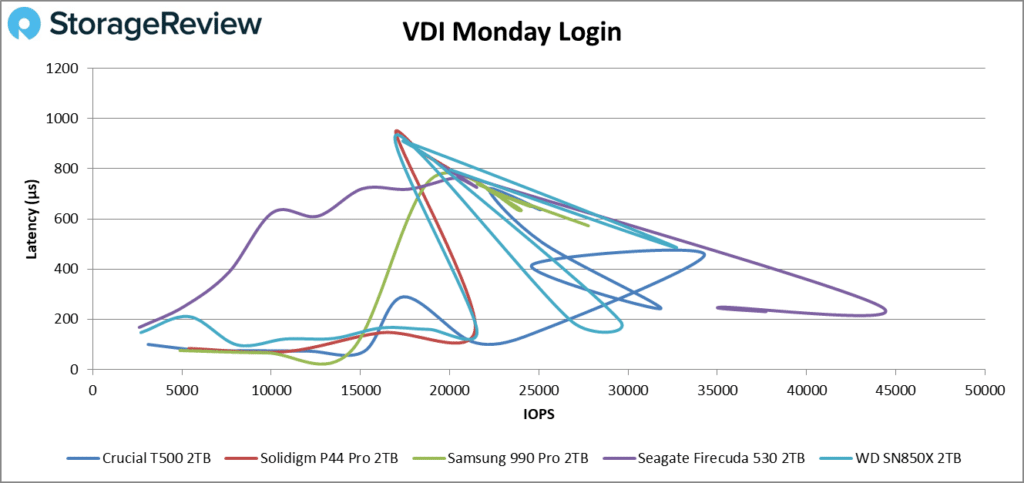
CrystalDiskMark Speed Test
We performed a lighter-weight test on the T500 to demonstrate its Gen4 speeds in our Windows 11 consumer test platform. Using CrystalDiskMark, the drive recorded sequential transfer speeds of 7.12GB/s read and 6.97GB/s for write.
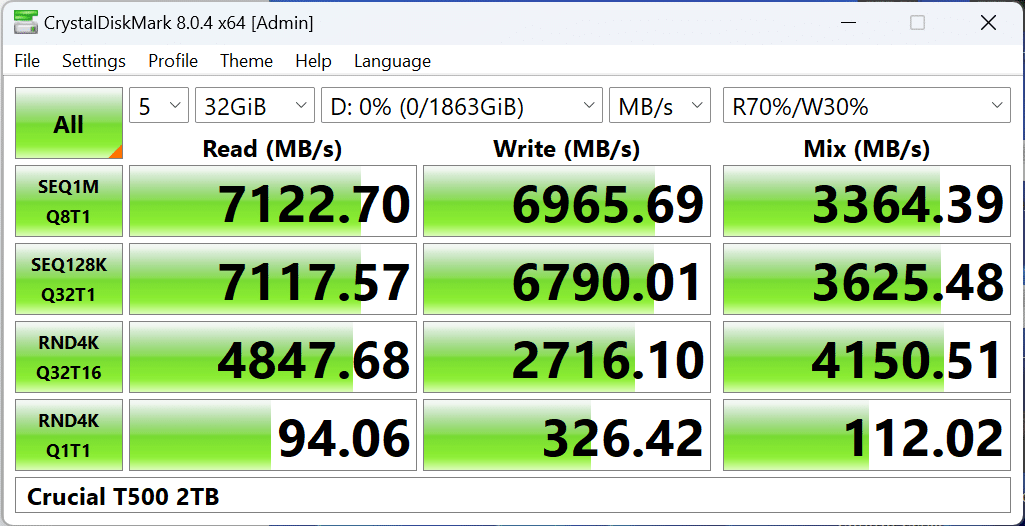
Blackmagic Disk Speed Test
We measured performance inside a Windows 11 environment on our consumer test platform via the popular Blackmagic test. Here, it posted 5.67GB/s read and 5.95GB/s write, which kept pace with the impressive Samsung 990 Pro (5.76GB/s write and 5.92GB/s write). That said, tests like Blackmagic and CDM certainly don’t paint a full picture.
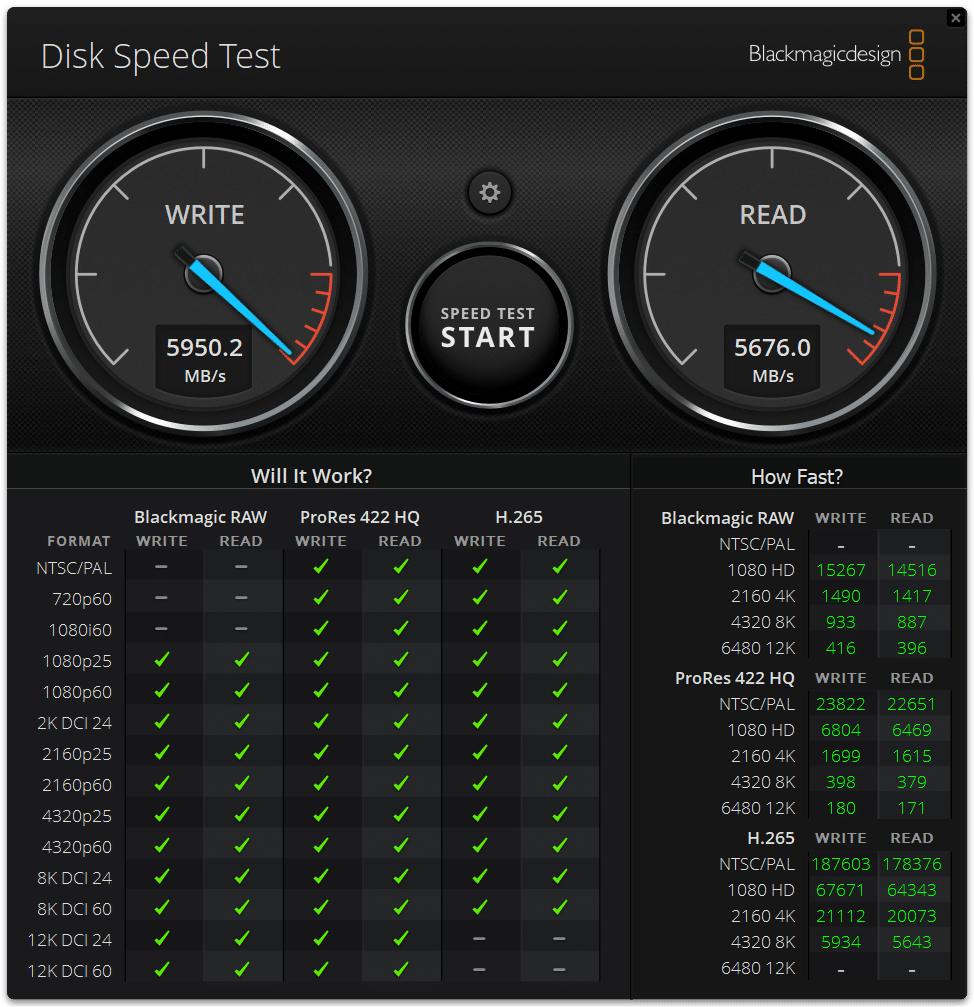
BootBench
BOOT-BENCH-1 is a workload profile adopted by OCP to profile SSDs designed for server boot duty. While this is intuitively a job for enterprise SSDs, client SSDs are often selected for their performance, capacity, and cost combination. The boot drive issue is germane not just to hyperscalers but also to server and storage system providers, as they face similar challenges.
This boot workload executes a relatively intense test plan that fills the entire drive with writes before testing a read-heavy workload sequence. For each test, it performs a 32K random read async operation alongside a 15MiB/s synchronous 128k random write and a 5MiB/s synchronous 128k random write/trim background workload. The script starts with the random-read activity at a 4-job level and scales up to 256-jobs at its peak. The final result is the read-operations performed during its peak run.
The OCP goal for this benchmark is a pass/fail at 60K read IOPS. Most drives we test will far exceed the minimum, but the results are instructive regardless.
The Crucial T500 received a “DNF” due to its poor latency and IOPS that did not make the cut-off.
Here is the current boot leaderboard:
| SSD | Read IOPS |
| Sk hynix Platinum P41 | 220,884 IOPS |
| WD SN850X | 219,883 IOPS |
| Solidigm P44 Pro | 211,999 IOPS |
| Fantom VENOM8 | 190,573 IOPS |
| Samsung 990 Pro | 176,677 IOPS |
| Sabrent Rocket 4 Plus | 162,230 IOPS |
| ADATA Legend 970 | 65,632 IOPS |
| Predator Storage GM7 | 35,302 IOPS |
| Crucial T500 | DNF |
Conclusion
The Crucial T500 Gen4 SSD presents a complicated picture, especially for a drive that is marketed as a high-performer. While it delivers strong read performance, as evidenced by results from our CrystalDiskMark, and Blackmagic tests, it falls significantly short in write-heavy workloads and boot-bench scenarios. Even more concerning are the sustained write tasks, where the drive’s performance takes a substantial hit.
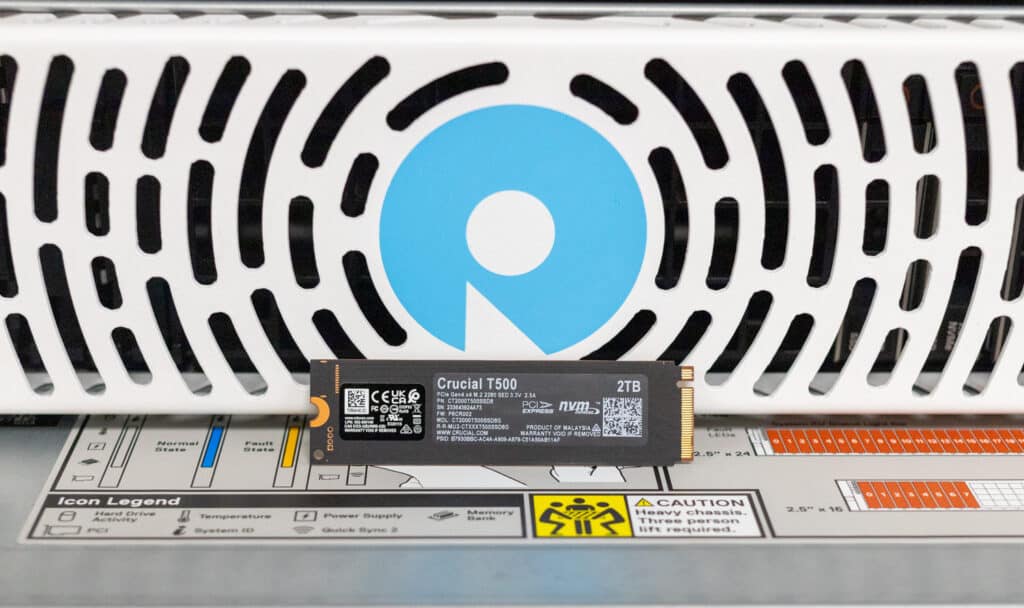
The problem is best highlighted when comparing CrystalDiskMark and Blackmagic tests, which use a relatively small footprint (32GB for CDM and 5GB for Blackmagic) vs. our VDBench tests, which employ a more realistic/useful 90GB footprint after a 100% fill. In the more intensive testing, the drive came undone and further, it failed to pass the OCP boot test (a common issue amongst Phison drives).
This raises questions about how well the drive can handle real-world workloads, those that surpass a few Chrome tabs. The performance problem is heightened by the fact that there are a few older drives in this segment that are extremely good. Clearly, Micron felt compelled to get their new 232-layer NAND onto the drive, but as we see often, NAND is only one piece of the SSD puzzle.
Despite Micron touting the T500 as a drive meant for resource-intensive applications, it is difficult to recommend for any serious gamer, content creator, or professional. There are simply too many other better options that cost significantly less.
Crucial T500 at Amazon (affiliate link)




 Amazon
Amazon